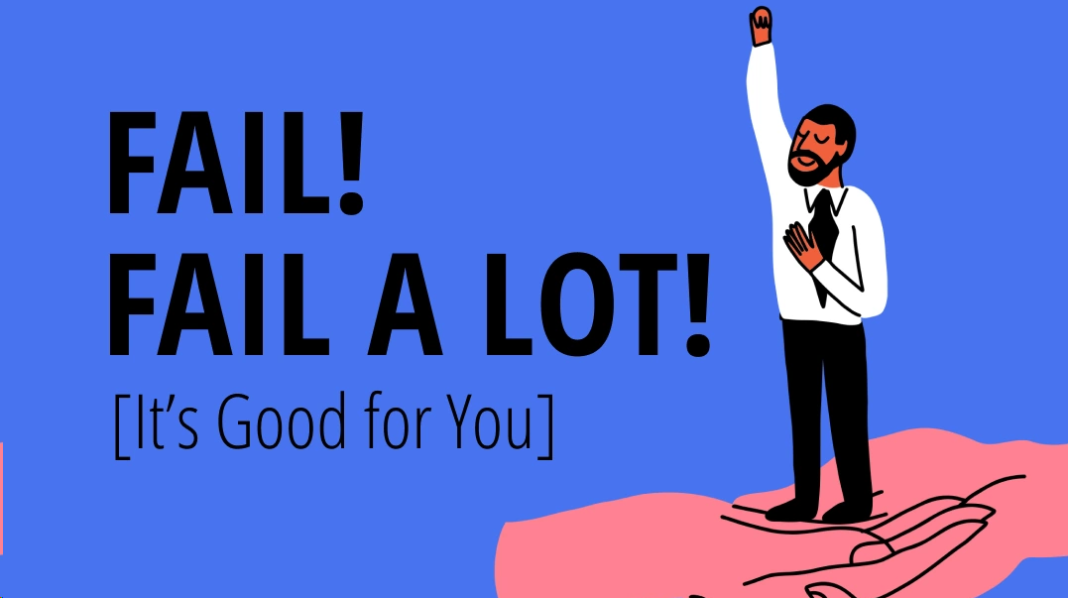Failure. It’s a word that makes most of us cringe. Our stomachs knot, our palms sweat, and our inner critic awakens, ready to pounce. Yet, beneath the discomfort lies an undeniable truth: failure isn’t just a part of life—it’s a crucial ingredient in the recipe for success.
As Brené Brown, renowned researcher and speaker, puts it, “There is no innovation and creativity without failure. Period.” Despite this, many of us remain paralyzed by the fear of failing. We dread the judgment, the shame, and the possibility that failure means we’re simply not good enough. But the reality is far more encouraging: failure is not a verdict on our abilities—it’s a prerequisite for growth.
Failure is Universal—And Inevitable
Regardless of industry, profession, or level of experience, failure touches everyone. Consider these sobering statistics:
- Organizations win only about 43% of their requests for proposals, meaning more than half of their bids don’t succeed.
- Newly minted surgeons experience a 6.2% 30-day mortality rate in their patients, while even seasoned surgeons face a 4.5% rate.
- Roughly 25% of businesses shut down within their first year; after a decade, 70% have failed.
- Even Amazon, now a global giant, was once predicted to collapse before it found its footing.
If titans like Jeff Bezos had let early failures stop them, the world might look very different today.
Given that failure is so widespread, why do we take it so personally? Why do setbacks feel like a reflection of our worth rather than what they truly are—stepping stones on the path to success?
The answer lies partly in how our minds and bodies are wired.
The Science Behind Our Fear of Failing
When we fail, our bodies react as though we are facing a life-threatening danger. This response dates back to our ancestors, for whom mistakes often had fatal consequences. Today, however, the same physiological reactions occur even when the stakes are far less dire.
Imagine opening an email from your boss with the ominous subject line “Feedback.” The moment you read, “I’m disappointed to see…”, your heart races, your palms sweat, and you feel an overwhelming urge to escape—perhaps by scrolling through social media or turning to a distraction. This is the fight-or-flight response in action, triggered by neural processes that include emotional regulation, error detection, and social information processing. Cortisol, the stress hormone, floods your system, heightening your anxiety.
Beyond the physical, failure strikes at our self-worth. We feel shame because we worry that others will see us as less competent or valuable. This hits our self-esteem hard, creating cognitive dissonance between who we believe we are and the reality we’re confronted with. But while we cannot eliminate this deeply ingrained response, we can learn to manage it.
Resilience: The Antidote to Failure
The key to bouncing back lies in developing resilience—a skill that, thankfully, can be learned and strengthened over time. Resilience allows us to face setbacks with courage, learn from them, and emerge stronger.
1. Cultivate Self-Compassion
One of the biggest obstacles to resilience is our own harsh inner dialogue. That critical voice that tells us we’re not good enough grows louder in the wake of failure. To quiet it, we need to practice self-compassion.
Brené Brown emphasizes that failure is evidence of effort, not inadequacy. She also highlights the power of empathy in overcoming shame, urging people to share their failures openly. In her TED Talks on vulnerability and shame—viewed by millions worldwide—Brown explains that secrecy, silence, and judgment allow shame to thrive. But when we share our struggles and hear “me too” from others, shame loses its grip.
Opening up about failure not only normalizes the experience but also reminds us that we’re not alone. Everyone struggles. Everyone fails. And everyone has the capacity to grow from those experiences.
2. Adopt a Positive Mindset
Resilience also requires a positive outlook. Psychologist Richard Wiseman’s decade-long research into “lucky” people found that their secret wasn’t chance, but resilience. They consistently reframed failures as opportunities, turning misfortune into valuable lessons.
This mindset aligns with findings from the science of manifestation: people who believe in their ability to succeed are more likely to take action, increasing their chances of actually achieving their goals. Even common affirmations, like “practice makes progress” (a more realistic version of “practice makes perfect”), help shift our perspective from perfectionism to continuous improvement.
By choosing to see failure as a stepping stone rather than a stumbling block, we empower ourselves to keep moving forward.
Creating a Failure-Response Plan
Since failure is unavoidable, it makes sense to prepare for it. Having a strategy in place can transform moments of failure into learning opportunities, minimizing the emotional toll and maximizing the potential for growth.
Step 1: Pause and Reflect
When failure strikes, resist the urge to react impulsively. Allow yourself to feel your emotions, but don’t catastrophize. Instead, approach your feelings with curiosity. Ask yourself: What am I feeling? Why does this hurt? This reflective pause helps prevent the spiral of blame and shame.
Step 2: Seek Context and Clarity
Gather information about the failure. Solicit feedback, examine objective data, and consider external factors that may have contributed to the outcome. This process combats confirmation bias—the tendency to interpret events in ways that confirm our negative self-beliefs.
For instance, if a client criticizes your work, look at the bigger picture. Was the project particularly complex? Were the expectations clearly communicated? Were there personal distractions at play? Often, these factors reveal that failure isn’t a reflection of incompetence, but a result of challenging circumstances.
Step 3: Respond Thoughtfully
Once you’ve processed your emotions and gathered information, respond with calm and clarity. Focus on actionable steps: What can you learn? How can you improve? What will you do differently next time? This proactive approach builds confidence and resilience over time.
Failure as a Gateway to Growth
The truth is, we cannot—and should not—avoid failure. Every success story is built on a foundation of missteps, setbacks, and lessons learned the hard way. By embracing failure, practicing self-compassion, maintaining a positive outlook, and developing a clear response strategy, we equip ourselves to navigate life’s challenges with resilience and grace.
So, don’t fear failure. Welcome it as proof that you’re pushing boundaries and daring to grow. In the end, it’s not the failure that defines us, but how we respond to it.
Go ahead—fail boldly, and rise stronger.





